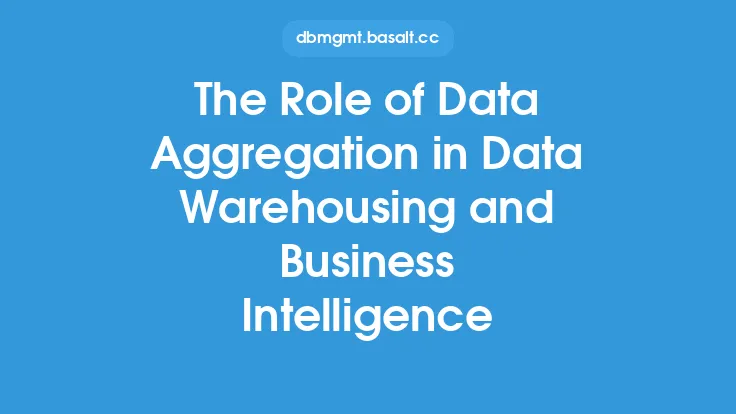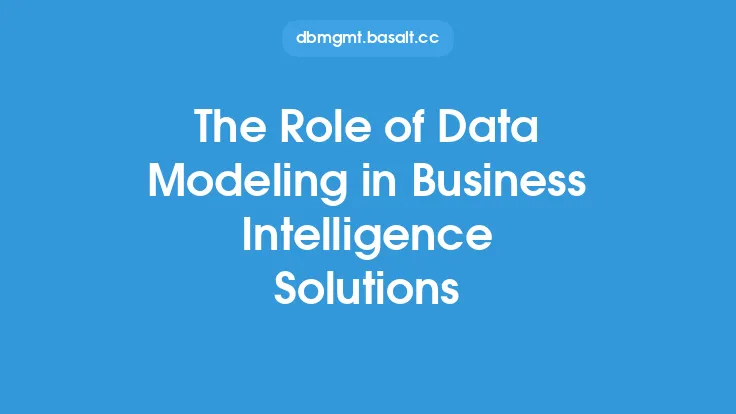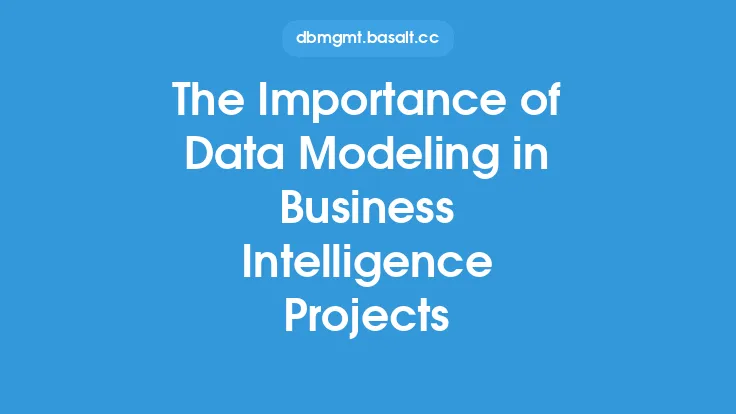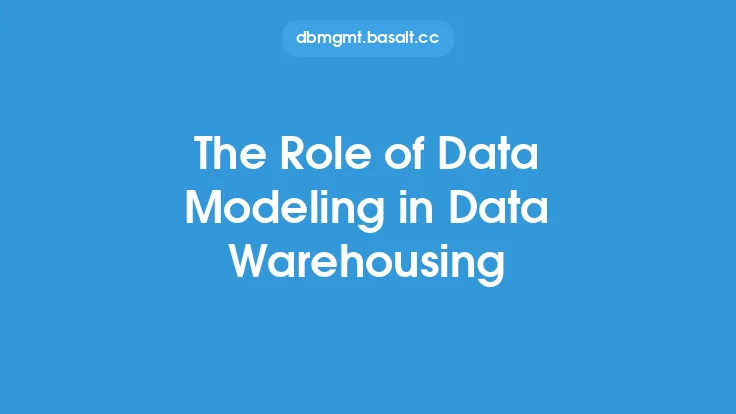Data warehousing and business intelligence are crucial components of modern business operations, enabling organizations to make informed decisions based on data-driven insights. At the heart of these systems lies the concept of data normalization, which ensures that data is organized and structured in a way that supports efficient querying and analysis. One key aspect of data normalization is data disaggregation, which involves breaking down complex data sets into smaller, more granular components. In this article, we will explore the role of data disaggregation in data warehousing and business intelligence, and how it contributes to the overall effectiveness of these systems.
Introduction to Data Disaggregation
Data disaggregation is the process of decomposing complex data sets into smaller, more detailed components. This involves breaking down aggregated data into its constituent parts, allowing for more precise analysis and querying. Data disaggregation is essential in data warehousing and business intelligence, as it enables organizations to extract valuable insights from their data and make informed decisions. By disaggregating data, organizations can identify trends, patterns, and relationships that may not be apparent at the aggregated level.
Benefits of Data Disaggregation
Data disaggregation offers several benefits in the context of data warehousing and business intelligence. Firstly, it enables more precise analysis and querying, allowing organizations to extract specific insights from their data. Secondly, data disaggregation facilitates the identification of trends and patterns that may not be apparent at the aggregated level. This can help organizations to identify areas of improvement, optimize business processes, and make informed decisions. Finally, data disaggregation supports the creation of more detailed and accurate reports, enabling organizations to communicate complex information in a clear and concise manner.
Data Disaggregation Techniques
There are several techniques used in data disaggregation, including drill-down analysis, data partitioning, and data normalization. Drill-down analysis involves breaking down aggregated data into smaller components, allowing for more detailed analysis and querying. Data partitioning involves dividing large data sets into smaller, more manageable components, enabling more efficient querying and analysis. Data normalization involves organizing data into a structured format, eliminating data redundancy and improving data integrity.
Data Disaggregation in Data Warehousing
Data warehousing is a critical component of business intelligence, providing a centralized repository for organizational data. Data disaggregation plays a key role in data warehousing, enabling organizations to extract valuable insights from their data. By disaggregating data, organizations can create detailed and accurate reports, identify trends and patterns, and make informed decisions. Data warehousing systems typically employ data disaggregation techniques, such as drill-down analysis and data partitioning, to support more precise analysis and querying.
Data Disaggregation in Business Intelligence
Business intelligence is a set of processes and technologies that enable organizations to make informed decisions based on data-driven insights. Data disaggregation is a critical component of business intelligence, supporting the creation of detailed and accurate reports, and enabling organizations to extract valuable insights from their data. Business intelligence systems typically employ data disaggregation techniques, such as data normalization and data partitioning, to support more precise analysis and querying. By disaggregating data, organizations can identify trends and patterns, optimize business processes, and make informed decisions.
Challenges and Limitations of Data Disaggregation
While data disaggregation offers several benefits, it also presents several challenges and limitations. Firstly, data disaggregation can be a complex and time-consuming process, requiring significant resources and expertise. Secondly, data disaggregation can result in data overload, making it difficult for organizations to extract valuable insights from their data. Finally, data disaggregation can be limited by data quality issues, such as data inconsistencies and inaccuracies. To overcome these challenges, organizations must employ effective data management strategies, including data normalization, data partitioning, and data quality control.
Best Practices for Data Disaggregation
To ensure effective data disaggregation, organizations must employ best practices, including data normalization, data partitioning, and data quality control. Firstly, organizations must ensure that their data is properly normalized, eliminating data redundancy and improving data integrity. Secondly, organizations must employ data partitioning techniques, dividing large data sets into smaller, more manageable components. Finally, organizations must implement data quality control measures, ensuring that their data is accurate, complete, and consistent. By following these best practices, organizations can ensure that their data disaggregation efforts are effective and efficient.
Conclusion
In conclusion, data disaggregation plays a critical role in data warehousing and business intelligence, enabling organizations to extract valuable insights from their data and make informed decisions. By breaking down complex data sets into smaller, more granular components, organizations can identify trends and patterns, optimize business processes, and create detailed and accurate reports. While data disaggregation presents several challenges and limitations, organizations can overcome these by employing effective data management strategies and best practices. As data warehousing and business intelligence continue to evolve, the importance of data disaggregation will only continue to grow, enabling organizations to unlock the full potential of their data and drive business success.





